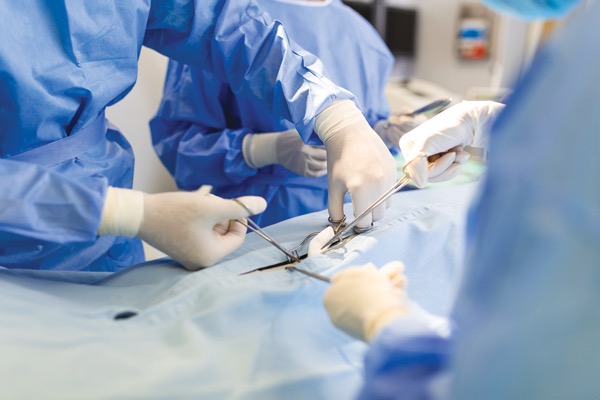WESTLAKE VILLAGE, Calif.—A novel automated antibiotic prophylaxis program has demonstrated a significant reduction in surgical site infections, according to data presented at the 2023 annual meeting of the Surgical Infection Society.
Results of the Emory University study, which enrolled more than 20,000 patients and used automated tools to provide feedback and track performance, showed a 12% improvement in antibiotic prophylaxis compliance and a 33% reduction in the overall rate of ssIs (2.8% vs. 1.9%).
“Our study shows that when combined with a multidisciplinary approach, automation can lead to sustained improvements in the rate of ssIs,” said Eli Mlaver, MD, a general surgery resident at Emory University School of Medicine, in Atlanta.
As Dr. Mlaver reported, the program was implemented at two separate facilities, covering a wide range of service lines. A multidisciplinary subcommittee created a comprehensive list of antibiotic recommendations for all CPT (Current Procedural Terminology) codes within the included service lines. In addition, Dr. Mlaver and colleagues developed an automated daily auditing system using the hospital’s clinical data warehouse, along with a system of notifications sent by email to the entire surgical and anesthesiology care team when noncompliance was identified.
The researchers evaluated the program’s success by comparing protocol compliance and risk-adjusted rates of superficial and deep ssIs before and after the quality improvement implementation. The study included 20,000 patients (11,000 pre-implementation and 9,000 post-implementation).
As Dr. Mlaver reported, results showed an improvement in antibiotic prophylaxis compliance from 86% to 98%. The observed-to-expected ratios for ssIs subsequently decreased from 0.8 to 0.48, and the overall ssI rate decreased from 2.8% to 1.9%. When adjusting for comorbidities, the odds of ssI post-implementation were 0.69 times the odds pre-implementation, said Dr. Mlaver, who emphasized the importance of the multidisciplinary approach and automation in achieving these results.
“We learned that our auditing tools need to be absolutely timely, trusted and actionable for the care team,” Dr. Mlaver said. “The automation of these tools is what led to sustainability.”
Dr. Mlaver acknowledged several challenges to implementing this program at other institutions, including inconsistencies in the literature, unique microbiome issues in different hospitals and provider variations. However, Dr. Mlaver believes the general methods of creating a multidisciplinary team and measuring compliance would be applicable to any institution.
The study authors also addressed potential limitations, such as the Hawthorne effect and email fatigue. According to Dr. Mlaver, researchers mitigated email fatigue by only sending actionable items on post-op day 1 and sending monthly reports on the 10th of the month to avoid overlapping with other hospital emails.
“As this program shows promise in reducing surgical site infections, further research and implementation in other settings could provide valuable insights into its broader applicability and potential benefits for patient outcomes,” Dr. Mlaver concluded.
Discussant of the abstract, William G. Cheadle, MD, called the results of this study “fantastic” and praised the researchers for their ability to overcome the logistical challenges of conducting such a large-scale research project that requires leadership buy-in from multiple specialties and the clinic.

Dr. Cheadle, a professor of surgery at the University of Louisville, in Kentucky, noted that the study’s prospective nature and implementation of strict antibody protocols as part of an institutional quality improvement program led to significant clinical differences. He also highlighted the study’s ample statistical power, which allowed for the detection of even small differences in outcomes.
In addition, Dr. Cheadle asked about the implementation process and presence of a “champion” to ensure the protocol’s adherence. He also recommended conducting a cost–benefit analysis to demonstrate the financial savings for the hospital, both in terms of patient care dollars and Medicare penalties.
“While this program did require championing, it’s important to note that the sustainability of this program through the COVID-19 pandemic speaks for itself—and the power of automation,” Dr. Mlaver responded. “I’m also happy to report that this program has now become standard of care at all Emory sites.”


